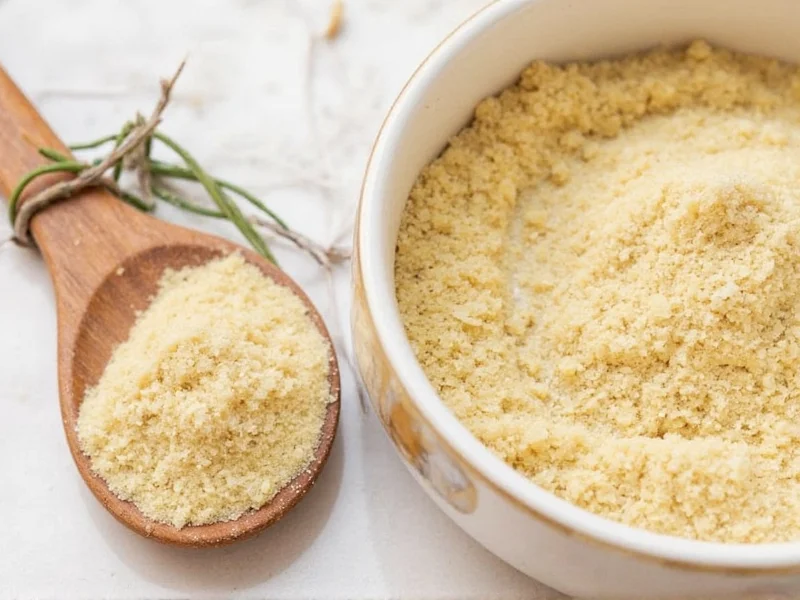Understanding the distinction between these common pantry staples is essential for precise cooking. Many home chefs mistakenly treat garlic powder and garlic salt as identical seasonings, leading to overly salty or under-seasoned dishes. Let's examine their composition, flavor profiles, and proper usage in detail.
Composition: What's Really Inside
Garlic powder consists solely of dehydrated, finely ground garlic cloves. The production process involves peeling fresh garlic, dehydrating it at low temperatures, and grinding it into a fine powder. No additional ingredients are included.
Garlic salt, however, combines garlic powder with table salt, typically in ratios ranging from 3:1 to 6:1 (garlic powder to salt). Some commercial varieties also include anti-caking agents like calcium silicate or silicon dioxide to prevent clumping.
| Product | Primary Ingredients | Typical Ratio | Additional Ingredients |
|---|---|---|---|
| Garlic Powder | 100% dehydrated garlic | N/A | None |
| Garlic Salt | Garlic powder + salt | 3:1 to 6:1 | Anti-caking agents |
Flavor Profile Comparison
Garlic powder delivers concentrated garlic flavor without saltiness. Its taste is more intense than fresh garlic due to the dehydration process that concentrates flavors. The powder form allows for even distribution throughout dishes.
Garlic salt provides both garlic flavor and saltiness simultaneously. The added salt dilutes the garlic intensity, making it milder than pure garlic powder. This dual function makes it convenient but less versatile for precise seasoning.
Nutritional Differences: The Sodium Factor
The most significant nutritional difference lies in sodium content. One teaspoon of garlic powder contains approximately 10-15mg of sodium, while the same amount of garlic salt contains 1,200-1,800mg of sodium - nearly your entire daily recommended limit.
This dramatic difference explains why substituting one for the other without adjustment leads to disastrous results. Many cooking mishaps occur when recipes call for garlic powder but cooks use garlic salt instead, unaware of the massive sodium increase.
| Nutrient (per teaspoon) | Garlic Powder | Garlic Salt (3:1 ratio) |
|---|---|---|
| Calories | 6 | 10 |
| Total Fat | 0g | 0g |
| Sodium | 10-15mg | 1,200-1,800mg |
| Garlic Content | 100% | 33-60% |
When to Use Each: Practical Application
Choose garlic powder when:
- You need pure garlic flavor without additional salt
- Following recipes that specify exact salt measurements separately
- Cooking for individuals on sodium-restricted diets
- Creating spice blends where you control the salt content
- Adding garlic flavor to sweet dishes or baked goods
Choose garlic salt when:
- You want the convenience of combined seasoning
- Preparing dishes where precise salt measurement isn't critical
- Seasoning meats before grilling or roasting
- Creating quick rubs or finishing dishes
- You're following older recipes that specifically call for garlic salt
Substitution Guide: Getting It Right
Substituting between these ingredients requires careful calculation to maintain proper flavor balance and sodium levels:
Garlic powder to garlic salt: Use ½ teaspoon garlic salt for every 1 teaspoon garlic powder called for in a recipe. Then reduce additional salt in the recipe by ¼ teaspoon.
Garlic salt to garlic powder: Use 1½ teaspoons garlic powder for every 1 teaspoon garlic salt. Then increase additional salt by ½ teaspoon.
These ratios assume a standard 3:1 garlic powder to salt ratio in commercial garlic salt. If using a different ratio, adjust accordingly. Always taste as you go when substituting.
Creating Your Own Garlic Salt
For better control over flavor and sodium content, make your own garlic salt at home:
- Combine 3 parts garlic powder with 1 part fine sea salt
- Mix thoroughly in a small bowl
- Store in an airtight container away from light and moisture
- Use within 3-4 months for best flavor
Customization options:
- Adjust the ratio to 4:1 or 5:1 for less salty versions
- Add ¼ teaspoon of onion powder for complexity
- Include a pinch of citric acid for brightness
- Use Himalayan pink salt or kosher salt for different mineral profiles
Storage Recommendations
Both products maintain quality best when stored properly:
- Keep in airtight containers away from heat and moisture
- Store in a cool, dark cupboard (not above the stove)
- Garlic powder typically lasts 2-3 years; garlic salt 1-2 years
- Check for clumping (in garlic salt) or loss of aroma (in garlic powder) as signs of degradation
- Never store in the refrigerator due to moisture content
Avoiding Common Mistakes
Cooks frequently make these errors with garlic powder and garlic salt:
- Using equal amounts when substituting between the two
- Not adjusting additional salt in recipes
- Using garlic salt in low-sodium recipes without modification
- Assuming all brands have the same garlic-to-salt ratio
- Storing near heat sources, which degrades flavor compounds
Remember that the potency of both products diminishes over time. Older garlic powder loses its pungency, while garlic salt may develop off-flavors as the garlic component oxidizes.











 浙公网安备
33010002000092号
浙公网安备
33010002000092号 浙B2-20120091-4
浙B2-20120091-4